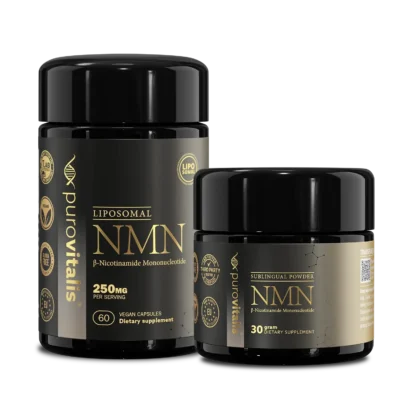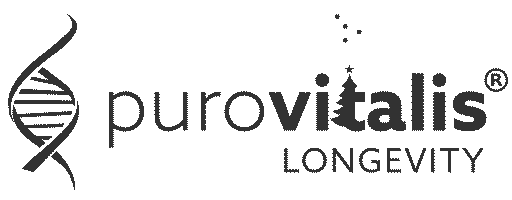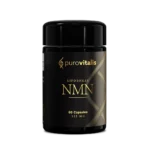
Indholdsfortegnelse
I over et årti har NMN været genstand for videnskabelig interesse på grund af sin rolle i at understøtte cellulær energiproduktion og opretholde NAD⁺-niveauer - en nøglefaktor i metabolisk sundhed og aldring.
Dyreforsøg har konsekvent vist lovende effekter: forbedret udholdenhed, forbedret mitokondriefunktion og tegn på langsommere biologisk aldring.
Men mange af påstandene om NMN's virkninger på mennesker har hidtil været baseret på prækliniske data. Det har ført til kritik, især på grund af manglen på klinisk dokumentation for dets effektivitet og - lige så vigtigt - dets sikkerhed hos raske personer.
Den usikkerhed ser nu ud til at være løst. Et nyt randomiseret, placebokontrolleret klinisk forsøg har undersøgt både effekten og sikkerheden af NMN-tilskud hos raske midaldrende voksne - og resultaterne giver ny indsigt i dets potentielle rolle for menneskers sundhed, energi og longevity.
Formålet med undersøgelsen
Forskere fra USA, Kina, Holland og Indien er gået sammen om at gennemføre et klinisk forsøg på mennesker om effekten af NMN, hvis resultater blev offentliggjort i GeroScience Journal i december 2022.
Undersøgelsen havde titlen: Effekten og sikkerheden ved tilskud af β-nikotinamidmononukleotid (NMN) hos raske midaldrende voksne: et randomiseret, multicenter, dobbeltblindt, placebokontrolleret, parallelgruppe, dosisafhængigt klinisk forsøg.
Dette kliniske forsøg var designet til at evaluere, hvordan NMN-tilskud påvirker raske voksne midt i livet. I alt 80 deltagere mellem 40 og 65 år deltog i undersøgelsen. De blev tilfældigt udvalgt til at modtage enten placebo eller en daglig oral dosis NMN - 300 mg, 600 mg eller 900 mg - i 60 dage.
Undersøgelsen fulgte et stringent design: Den var randomiseret, dobbeltblindet og placebokontrolleret, hvilket betyder, at hverken deltagere eller forskere vidste, hvem der fik NMN, og hvem der fik placebo i løbet af forsøgsperioden.
Det primære formål med undersøgelsen var at måle ændringer i blodets NAD⁺-niveauer.
Derudover vurderede forskerne flere sekundære resultater:
- Overordnet sikkerhed og tolerabilitet, baseret på laboratorietest og rapporterede bivirkninger
- Fysisk udholdenhed, målt ved hjælp af en 6-minutters gangtest
- Biologisk alder, estimeret gennem blodbaserede biomarkører
- Livskvalitet, vurderet via et spørgeskema
Hvordan undersøgelsen blev gennemført
Det var et randomiseret, dobbeltblindt, placebokontrolleret, parallelgruppe, dosisafhængigt, multicenter klinisk forsøg - et metodologisk solidt design, der ofte bruges i klinisk forskning for at sikre pålidelige og upartiske resultater.
Undersøgelsen omfattede 80 raske voksne mellem 40 og 65 år. Deltagerne blev tilfældigt inddelt i en af fire grupper: tre NMN-grupper (300 mg, 600 mg og 900 mg) og en placebogruppe. Hver deltager tog de tildelte kapsler en gang dagligt i 60 dage før morgenmaden.
NMN-kapslerne indeholdt 150 mg rent β-nikotinamidmononukleotid. Placebokapslerne havde samme udseende og var fyldt med 150 mg rismel.
Oversigt over gruppen
| Gruppe | Dagligt indtag |
|---|---|
| Placebo-gruppe | 2-6 placebokapsler (150 mg rismel hver) |
| 300 mg NMN Gruppe | 2 × 150 mg NMN |
| 600 mg NMN Gruppe | 4 × 150 mg NMN |
| 900 mg NMN Gruppe | 6 × 150 mg NMN |
Inklusions- og eksklusionskriterier
Kvalificerede deltagere var raske voksne inden for det angivne aldersinterval. Eksklusionskriterierne omfattede brug af NAD-relaterede kosttilskud før forsøget, nuværende brug af statiner, rygning, nyligt stof- eller alkoholmisbrug eller deltagelse i andre kliniske undersøgelser.
Gravide eller ammende kvinder blev udelukket, og alle kvindelige deltagere gennemgik en graviditetstest i urinen før tilmelding.
Udførte vurderinger og tests
Deltagerne blev tilfældigt inddelt i en af fire grupper på dag 0. Der blev foretaget baselinemålinger før ethvert tilskud. Der blev foretaget opfølgende vurderinger på dag 30 og dag 60 for at evaluere både effekt og sikkerhed.
Her er en oversigt over de vurderinger, der er foretaget:
NAD⁺-koncentration i blodet
Det primære endepunkt var ændringen i blodets NAD⁺-niveauer.
Et valideret kolorimetrisk assay blev brugt til at kvantificere total NAD⁺ og NADH i serum.
Signifikante, dosisafhængige stigninger i NAD-niveauer blev observeret i alle NMN-grupper sammenlignet med både baseline og placebo. Der blev taget blodprøver på dag 0, dag 30 og dag 60.
Kolorimetrisk test
En kolorimetrisk test er en laboratoriemetode, der måler koncentrationen af et stof baseret på en farveændring. I denne undersøgelse blev testen brugt til at påvise de samlede niveauer af NAD⁺ og NADH i blodserummet. Jo stærkere farvesignalet er, jo højere er koncentrationen.
Sikkerhed og tolerance ved NMN-tilskud
Et af de sekundære mål var at evaluere sikkerheden og tolerancen ved NMN-tilskud.
For at gøre dette udførte forskerne blod- og urinprøver samt fysiske undersøgelser i hele undersøgelsesperioden. Eventuelle bivirkninger blev registreret og overvåget. Tolerancen blev også vurderet ved at spore, om deltagerne gennemførte forsøget - og bemærkelsesværdigt nok var der ingen i nogen af grupperne, der faldt fra.
6 minutters gangtest
6-minutters gangtesten blev udført på dag 0, 30 og 60 for at vurdere udholdenhed.
Deltagerne blev bedt om at gå så langt som muligt inden for 6 minutter, og den samlede gangdistance blev registreret. Dette fungerede som et af de sekundære resultatmål i evalueringen af NMN's effekt på den fysiske præstation.
Relateret: Undersøgelse: Kan NMN hjælpe dig med at få mere ud af din træning?
Den biologiske alderstest
Deltagernes biologiske alder blev estimeret ved hjælp af Aging.Ai 3.0 - et digitalt værktøj, der beregner, hvor gammel kroppen ser ud på baggrund af blodprøveresultater.
Den bruger 19 almindelige blodmarkører, herunder kolesterol, blodsukker, proteiner, blodtal, elektrolytter samt røde og hvide blodlegemer. Der blev foretaget målinger i begyndelsen (dag 0) og slutningen af undersøgelsen (dag 60) for at se, om NMN havde nogen indvirkning på aldringstegn i kroppen.
HOMA-indeks
Det er den værdi, der er særlig betydningsfuld, når det gælder insulinresistens. Den viser, i hvor høj grad insulin stadig kan arbejde i din krop. Værdier mellem 0,8 og 1,4 er ønskelige. Diabetes begynder ved en værdi på ca. 2,5.
SF-36 spørgeskema
Dette spørgeskema er designet til at vurdere deltagernes livskvalitet og generelle sundhedstilstand.
Oversigt over kliniske fund
Baseret på de vurderinger, der er beskrevet ovenfor, var det kliniske forsøg i stand til at afgøre, hvordan forskellige NMN-tilskudsdoser:
- Påvirker NAD⁺-koncentrationen i blodet
- Tolereres af den menneskelige krop
- Påvirker fysisk udholdenhed
- Påvirker biologisk alder
- Ændrer insulinresistens
- Påvirker den oplevede livskvalitet og det generelle helbred

NAD⁺-niveauerne steg markant i alle NMN-grupper
- Alle tre NMN-doser (300, 600 og 900 mg/dag) førte til statistisk signifikante stigninger i blodets NAD⁺-niveauer sammenlignet med baseline og placebo.
- Stigningen var dosisafhængig, men forskellen mellem 600 mg og 900 mg var minimal.
NMN-tilskud ser ud til at være sikkert og veltolereret
- Der blev ikke fundet nogen klinisk relevante abnormiteter i nogen blod- eller urinprøveparametre.
- Der blev rapporteret om i alt 9 bivirkninger (AE'er): 6 i placebogruppen, 1 i 300 mg NMN-gruppen og 2 i 600 mg-gruppen.
- Ingen af bivirkningerne blev betragtet som alvorlige.
- Ingen uønskede hændelser blev tilskrevet NMN.
- Ingen deltagere droppede ud af undersøgelsen.
Gangdistance forbedret i NMN-grupper
- Der blev ikke observeret nogen signifikant ændring i gangdistance i placebogruppen.
- Alle NMN-grupper viste signifikante forbedringer i 6-minutters gangtesten på dag 60 sammenlignet med placebo.
- 600 mg-gruppen klarede sig bedre end 300 mg-gruppen, mens der ikke blev observeret nogen meningsfuld forskel mellem 600 mg- og 900 mg-grupperne.
Du vil måske også gerne læse: Undersøgelse: NMN kan forbedre muskelfunktionen.
Biologisk alder faldt i NMN-grupper
- På dag 60 var den biologiske alder signifikant reduceret i alle NMN-grupper sammenlignet med baseline.
- I modsætning hertil viste placebogruppen en signifikant stigning i den biologiske alder.
Forbedret livskvalitet
- Alle NMN-grupper viste statistisk signifikante forbedringer i SF-36-sundhedsundersøgelsens score ved dag 60.
- Der blev ikke fundet nogen signifikante forskelle mellem NMN-grupperne.
- Placebogruppen viste ingen signifikant forbedring.
Forståelse af virkningerne af NMN
Dette kliniske forsøg giver stærke beviser for, at NMN-tilskud er både sikkert og effektivt for raske midaldrende voksne. Med betydelige forbedringer i NAD⁺-niveauer, udholdenhed, biologisk alder og livskvalitet viser NMN et reelt potentiale som en del af en sund aldringsstrategi.
Hvis du er nysgerrig efter at integrere NMN i din daglige rutine, kan du tage et kig på vores NMN-tilskud her - og mærke den forskel, det kan gøre for din daglige energi.
Referencer
- Yi L, Maier AB, Tao R, Lin Z, Vaidya A, Pendse S, Thasma S, Andhalkar N, Avhad G, Kumbhar V. Effekten og sikkerheden ved tilskud af β-nikotinamidmononukleotid (NMN) hos raske midaldrende voksne: et randomiseret, multicenter, dobbeltblindt, placebokontrolleret, parallelgruppe, dosisafhængigt klinisk forsøg. GeroScience. 2022 Dec 8;45(1):29-43. doi:10.1007/s11357-022-00705-1. PMID: 36482258; PMCID: PMC9735188.

NMN-tilskud Europæisk baseret Liposomal levering
Vores NMN-tilskud er her for at hjælpe dig med at stråle og føle dig bedst mulig! Prøv det nu!













